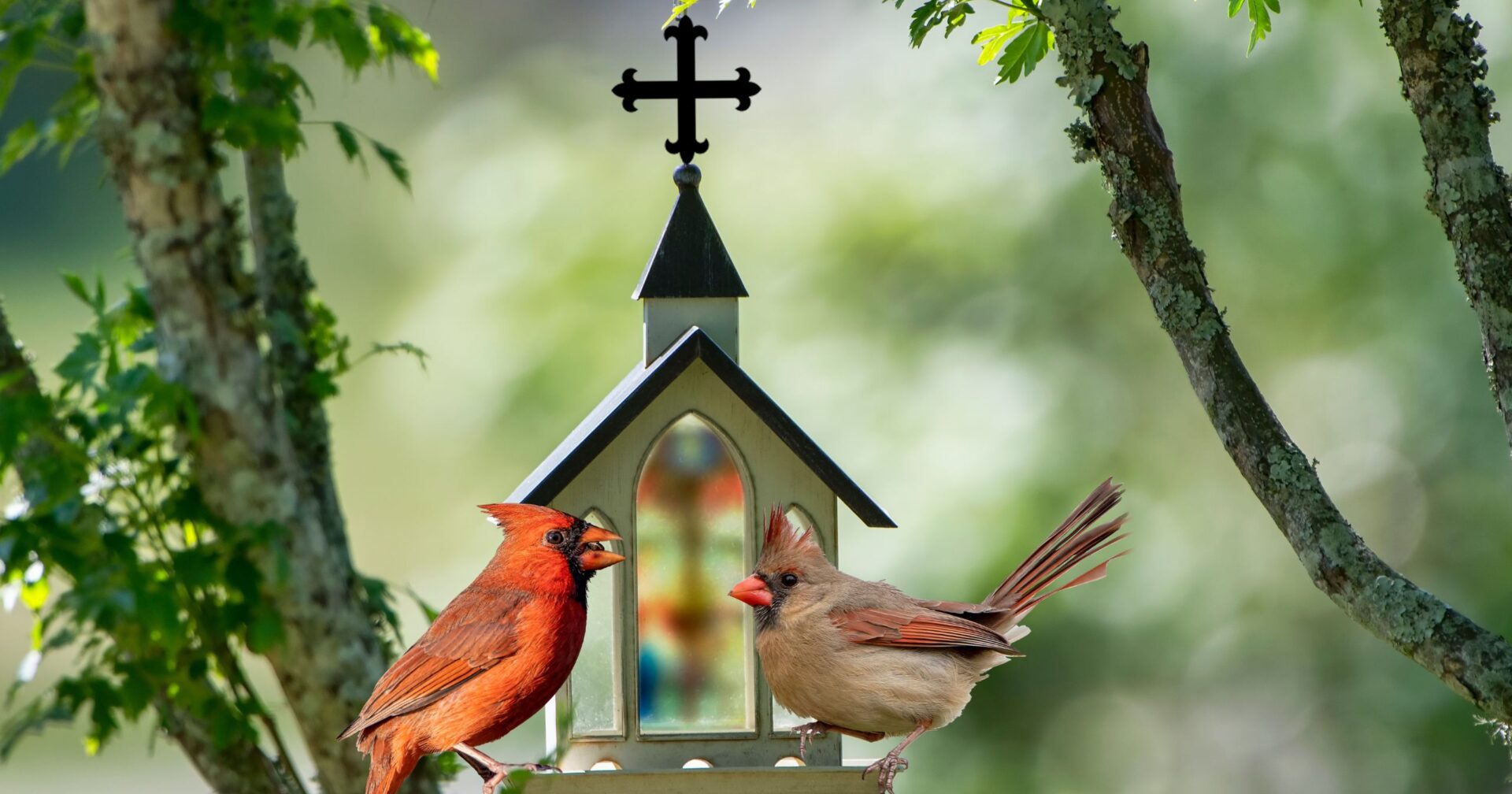When the first pioneers arrived in the New World in the 1600s, the bright red plumage of the cardinal was a shock compared to the less vibrant birds back in their European homelands.
Unimaginatively so, at first the cardinal was simply called the “red bird.” That is, until they spotted another bird that was also red – known today as the scarlet tanager. They had an ornithological conundrum on their hands.
The “red bird” reminded the early settlers in North America of the red cassocks worn by Catholic cardinals. The crest of the male cardinal also resembles the mitre worn by a cardinal. Thus, to make them distinct from the also red scarlet tanager, they were given the name cardinal.
It’s not clear whether they got their names directly from cardinals, or because cardinal had become a term for the specific shade of a vivid red in between scarlet and crimson. Never the less, the bird owes its name the Princes of the Church.
The term ‘cardinal’ itself has a curious history as well – it’s derived from the Latin cardo meaning ‘hinge’ or ‘pivot.’ The name come from the notion of their importance as the ‘pivots’ of Church life, and that Church decisions ‘hinge’ on them.
Photo credit: Bonnie Taylor Barry / Shutterstock.com















